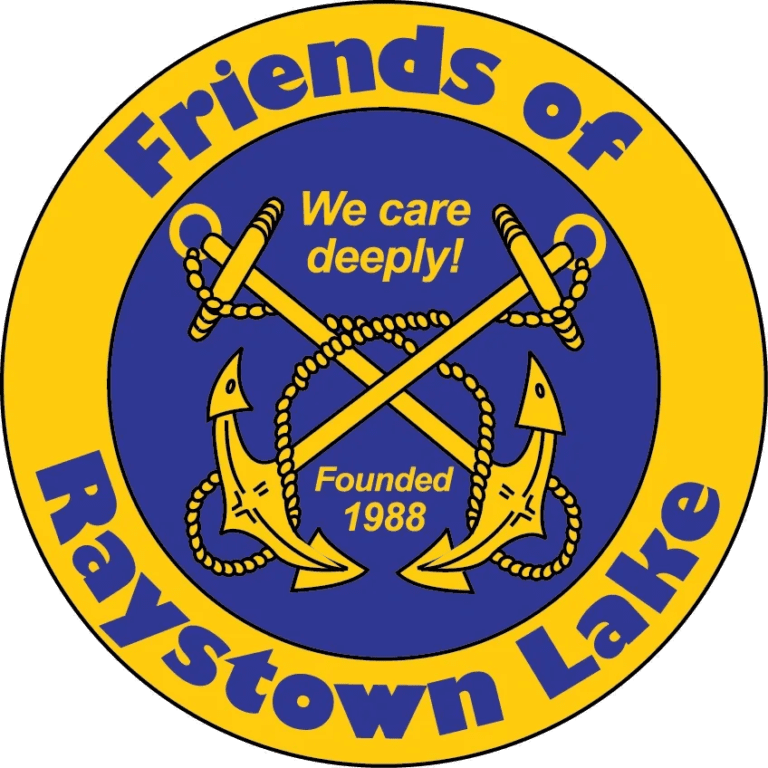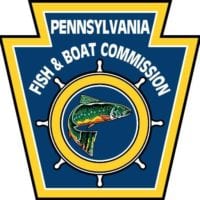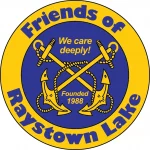The projects at Lake Raystown will be completed by several different techniques. The first method will be to use PFBC land based heavy machinery. The PFBC will use its equipment to build shoreline deflectors and boat mooring access. The shoreline devices stabilize the bank by dissipating wind and wave action at the lake. The rock used gives interstitial space for both fish and aquatic organisms. This will greatly enhance shoreline habitat while reducing current and future erosion issues. Landbased shoreline habitat improvements sites will also include mooring areas. These mooring areas will greatly increase angler use and access at the very popular campground sites.
The second method will be to use an aquatic rock barge. The rock barge is capable of holding up to 20 tons of rock and rootwads. This rock barge will be able to access remote shoreline that aren’t feasible to reach by any other method due to rugged terrain. The barge will create huge rock reefs and rock piles which will also significantly improve the aquatic habitat at the lake in areas that are severely devoid of habitat.
The last method will be to use specialized habitat boats which will place volunteer constructed artificial habitat improvement structures throughout the lake. These habitat improvement structures will be constructed by local partners and volunteers. These types of projects have been very successful and have been done on an annual basis for the last couple decades.
Outreach
This project will take advantage of PFBC and USACE media platforms. Project details and information will be sent through social media, newspaper outlets, local lake organizations, fishing clubs, and other media outlets. These outlets will help draw the necessary volunteers to complete the volunteer scale portion of the project. Videos completed from this project will be used as an educational tool so that the local public can learn about what improvements were done at the lake. It will also be used as a training tool for which PFBC can use to show other lake owners how to address shoreline improvement issues at their lake and the processes involved. Raystown staff can also highlight these videos at their amphitheater and interpretive contacts which have drawn up to 26,000 people a year. Scuba diving will also be done by local residents and PFBC staff to highlight fish usage of these submerged structures.
Monitoring
PFBC will be responsible for ensuring that all artificial habitat structures are placed appropriately. They will measure structures placed, feet of shoreline improved, time spent on the project by both the project volunteers and project partners, total acreage enhanced, funding used, and other important parameters. The Juniata college will be responsible for monitoring the effectiveness of rock rubble humps for spawning walleye. The availability of walleye spawning habitat in the lake is limited and annual stocking of fry is required to sustain the population from overfishing. The construction of improved reefs through this project provides an excellent opportunity to increase the availability of suitable spawning habitat; thus in turn increasing nest productivity and population stability.




